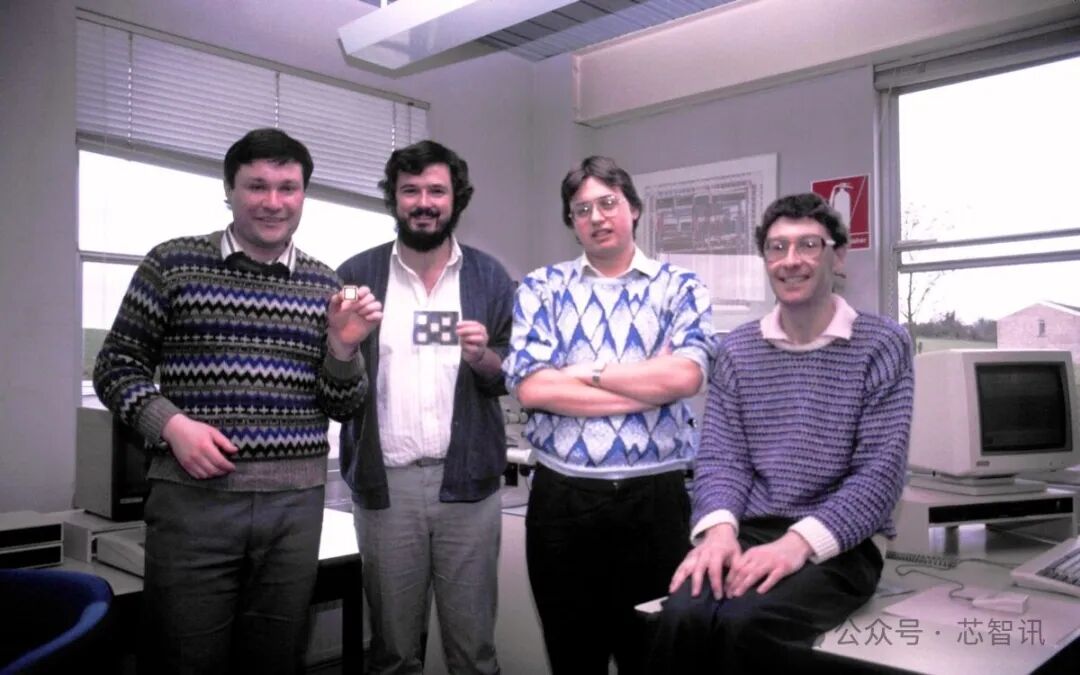April 2025 marks the 40th anniversary of the Arm architecture. Originally just an ambitious project in a small corner of Cambridge, UK, Arm has evolved into the most widely used computing architecture globally, supporting billions of devices—from sensors, smartphones, and laptops to cars and data centers.
The story of Arm architecture began over forty years ago, driven by a small team with a grand vision: to make high-performance, low-power computing technology accessible to everyone. The architecture embodies the principles of simplicity, elegance, and efficiency, laying the foundation for a new era of scalable technology.
To truly understand how Arm architecture became the backbone of modern computing, we need to turn back the clock to forty years ago, to where it all began.

Acorn Computers and the BBC Micro
In 1978, Chris Curry and Hermann Hauser co-founded Acorn Computers, a startup rooted in Cambridge that excelled at spotting opportunities. The company secured a contract to manufacture the BBC Micro, part of the UK government’s initiative to install a computer in every classroom. This victory marked a pivotal moment—not just for Acorn, but for the future of computing.
Acorn initially relied on the 6502 microprocessor to power the BBC Micro. However, as Acorn began to dream of building more powerful machines, the company decided to develop its own processor—a bold and unusual move for a small company at the time.
ARM1 Unleashes Revolutionary Processing Technology
In the early 1980s, two ambitious engineers—Sophie Wilson and Steve Furber—were tasked with designing a 32-bit processor. With limited resources, they meticulously crafted an efficient, elegant, and straightforward processor architecture. The ARM1 they invented was released in 1985, using only 25,000 transistors and employing a three-micron process. At the time, it was low-power, fast, and highly energy-efficient.
This project, born out of necessity, quickly evolved into a new architectural concept: RISC (Reduced Instruction Set Computing). Unlike the complex instruction sets of the time, RISC enabled more streamlined and faster processing—exactly what Acorn needed to break performance barriers.

Becoming the Chip for the Masses
Its internal slogan was “MIPS for the Masses” (Millions of Instructions Per Second). This philosophy distinguished Arm architecture from other processor designs of the time, which focused on high-end workstations or mainframes. Arm architecture emphasized energy efficiency, speed, and scalability.
The first system to showcase this new architecture was the Acorn Archimedes, released in 1987—the world’s first RISC-based personal computer.
The Transition from Acorn to Independence
However, Acorn’s journey was not without challenges. Financial difficulties led to restructuring, and in 1990, Advanced RISC Machines (ARM) Ltd was established as a joint venture between Acorn, Apple, and VLSI Technology. What was their mission? To bring the powerful capabilities and efficiency of Arm architecture to a broader market.
One of Arm’s earliest breakthroughs came with the launch of the Apple Newton, one of the first commercial devices to adopt Arm architecture. Although the Newton itself had limited market success, it played a crucial role in Arm’s global expansion. Soon after, Arm-based technology began to be applied in mobile phones, consumer electronics, IoT devices, and embedded systems, quickly gaining fame for its ultra-low power consumption and compact design.
Interestingly, Arm’s low-power design was not merely a strategic innovation but born out of necessity. Early on, Acorn could not afford expensive ceramic chip packaging, so the processors had to be efficient enough to operate in cheaper plastic packages. With no available power estimation tools, the chip’s design focused heavily on safety—this decision ultimately resulted in an extremely energy-efficient processor, setting the tone for energy-conscious designs for decades.
From Mobile Milestone to Market Standard
One of the early breakthrough moments for Arm architecture was the Nokia 6110. This mobile device, equipped with the Arm7TDMI processor, became one of the best-selling mobile devices of its time, marking the beginning of Arm’s explosive growth in the mobile sector.
Since then, Arm architecture has not only scaled up but has skyrocketed. It has become the de facto standard for mobile, embedded, IoT, and edge devices, with significant growth in adoption in cloud and data centers. Today, Arm technology has been licensed by hundreds of companies and is used in over 300 billion chips, demonstrating the scalability and versatility of Arm architecture. Armv9 has now entered its ninth generation. From this perspective, while it is estimated that 11 billion people have lived on Earth, Arm has shipped over 250 billion Arm cores—meaning there are actually more Arm cores in the world than the cumulative human population.
As this blog states, Arm architecture continues to evolve, shaping the computing landscape of today and the future. From major feature updates to smaller incremental enhancements, each step brings improvements in performance, efficiency, and functionality across various devices and applications.
The Same Area, Unmatched Efficiency
Consider this journey from another angle: the original ARM1 processor used 6,000 gates and had no cache. In contrast, the modern Armv9 CPU, built on 40nm technology, occupies roughly the same space but boasts 100 million gates, graphics acceleration, and multi-core capabilities. This represents a tremendous leap in performance, power consumption, and functionality while maintaining the original efficient philosophy of the architecture.
A Legacy Full of Innovation
The excellence of Arm architecture lies not only in its technical advantages but also in its core philosophy. From the beginning, Arm’s designs have centered on simplicity, flexibility, and energy efficiency. This enables it to uniquely adapt to today’s demands for computing speed, intelligence, and connectivity while also considering compactness and energy conservation. Whether in smartphones, smart thermostats, or cloud servers, Arm provides the intelligence that drives modern computing.
And this journey is far from over. As artificial intelligence, edge computing, and sustainability reshape the technology landscape, the architecture that began decades ago in a Cambridge lab is more relevant than ever. Arm aims to mass-produce competitive, high-performance, low-power processors, becoming the recognized standard in every market it enters and will continue to drive the future.
Source: ArmPrevious Exciting ArticlesGuokai Micro launches AI ISP brand Owl: Comprehensive upgrade of AI vision capabilities!TP-Link may face a $100 million fine, but the risk of a sales ban remains!Yangtze Memory’s parent company completes 9.42 billion yuan financing, valuation rises to 161.6 billion yuan!Intel’s Q2 financial forecast falls short of expectations! Chen Liwu sends internal letter: Indicates layoffs to come!Zhichun Technology’s performance “explodes”: net profit will shrink nearly 80% compared to previous forecasts!Taiwan Semiconductor Manufacturing Company accumulates losses of 8.85 billion yuan in the US factory, while the Nanjing factory made a profit of 5.84 billion yuan last year!Taiwan Semiconductor’s executive compensation for 2024 exposed: Wei Zhejia’s 213 million yuan, a 70% increase year-on-year!Changdian Technology’s 2024 revenue hits a new high, ranking third globally!560 TOPS! Horizon’s strongest intelligent driving chip Journey 6P successfully tapes out, Chery will be the first to launch it!After H20 was banned, why did Jensen Huang urgently visit China?Q1 net profit surged 92%! ASML responds to the impact of US tariff policies!Former Intel CEO appointed chairman of xLight, promoting FEL-EUV light source for commercial use in 2028! Costs can be reduced by three times!The US announces exemptions from “reciprocal tariffs” for mobile/PC/server/semiconductor products!Emergency notice on the identification rules for the “country of origin” of semiconductor products!Taiwan Semiconductor may face fines exceeding $1 billion?China’s 34% tariff on the US, what impact does it have on the semiconductor industry?
For industry communication and collaboration, please add WeChat: icsmart01Official WeChat group of Xinzhi News: 221807116